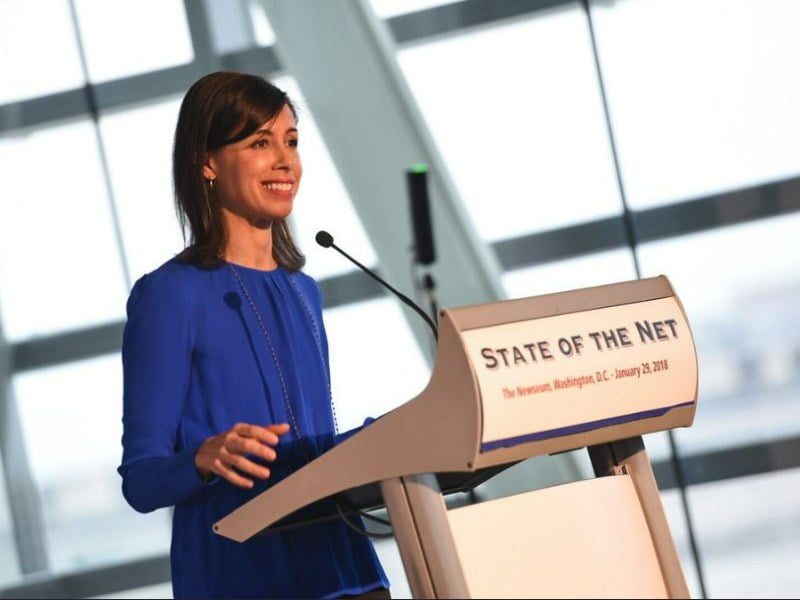US Federal Communications Commission chair Jessica Rosenworcel has proposed increasing the national standard for minimum broadband speeds to 100/20Mbps and the introduction of a long-term goal for broadband speed of 1Gbps/500Mbps.
The review of the national standard for minimum speeds would be carried out during the FCC’s annual evaluation of the state of broadband within the US.
Australia does not have minimum performance standards for telecommunications and possibly, if the minimum broadband speed was set to 100/40 Mbps back in 2010 at the start of the National Broadband Network (NBN) rollout, it would have been built with an all-fibre network, saving the nation more than $30 billion.
“The needs of internet users long ago surpassed the FCC’s 25/3 speed metric, especially during a global health pandemic that moved so much of life online,” Ms Rosenworcel said.
“The 25/3 metric isn’t just behind the times, it’s a harmful one because it masks the extent to which low-income neighbourhoods and rural communities are being left behind and left offline.
“That’s why we need to raise the standard for minimum broadband speeds now and while also aiming even higher for the future, because we need to set big goals if we want everyone everywhere to have a fair shot at 21st century success.”

The Notice of Inquiry circulated to the FCC board that commences the annual evaluation process, discusses a range of evidence that supports increasing the national standard for broadband speeds to 100 / 20 Mbps.
The shift would ensure that new networks funded by the US Infrastructure Investment and Jobs Act would be required to provide 100/20Mbps as the minimum speed provided to consumers.
In a forward-looking move, FCC chair Roseworcel has foreshadowed the need for a separate national goal of 1Gpbs/500 Mbps for the future.
By proposing a future national goal, the FCC is providing clear guidance to the industry that it should plan for the minimum broadband speed to be increased and build networks that can be upgraded to meet future demand and higher broadband speeds.
In Australia, one side of politics has spent the past decade talking down the need for an all-fibre access network and a minimum broadband speed that reflects technology use today.
In an important step, the FCC chair has proposed that the FCC consider affordability, adoption, availability, and equitable access as part of its determination as to whether broadband is being deployed in a reasonable and timely fashion.
In Australia, the technology used to connect nearly 4 million premises to the NBN will not achieve the FCC’s new minimum broadband speed standard according to NBN Co.
In June 2022, according to Ookla’s Speedtest Global Index rankings, the US median download speed global ranking for mobile is 27 (59.47/8Mbps) and fixed broadband is 8 (153.80/21.60 Mbps).
Australia’s median download speed ranking for mobile is 12 (87.27/11.30Mbps) and fixed broadband is 66 (52.19/18.01 Mbps)
The Australian government has commenced a review of the NBN and is expected to provide NBN Co with a new Statement of Expectations later this year.
Should the government set a minimum broadband speed in the Statement of Expectations? Yes.
The government should also consider how to provide clear guidance to industry on connection speeds and performance for the next decade and beyond.
The government has also announced a review of mobile broadband access and performance in regional areas.
For fixed access networks, most Australians would by now understand that Labor’s NBN plan back in 2010 was visionary, achievable and not a waste of taxpayer funds. If COVID-19 taught us anything, it provided strong justification for improved telecommunications.
But we have a long way to go before we can regain the momentum lost over the past nine years.
It is vital that the obsolete NBN technologies be replaced with Fibre to the Premises and we return to the original vision of 100/40Mbps –upload speeds are a key to being able to work from home successfully.
It appears that the data usage charge levied on Retail Service Providers (RSP) by NBN Co may finally become a historical footnote.
If this occurs, the government should set a national minimum broadband speed of 100/40 Mbps.
There is likely to be strong opposition to this by the telecommunications industry, as it sees the end of NBN Co’s data usage charge as an opportunity to increase margins whilst continuing to provide Australians with sub-standard connection speeds.
There are two approaches that the Government could take if it sets a national minimum broadband speed of 100/40Mbps to alleviate industry concerns.
The first is to request that the Australian Competition and Consumer Commission (ACCC) hold a broad inquiry into the telecommunications market. The inquiry would consider the range of factors that might affect the adoption of a national minimum broadband speed and RSP margins and profitability.
The alternative approach is to commission an inquiry by the Productivity Commission into telecommunications economics and policy issues.
A broad review of the telecommunications market is needed, as it is clearly evident that Australian consumers are not being provided with a reasonable service at affordable prices. The question is why?
Mark Gregory is an Associate Professor in the School of Engineering at RMIT University







